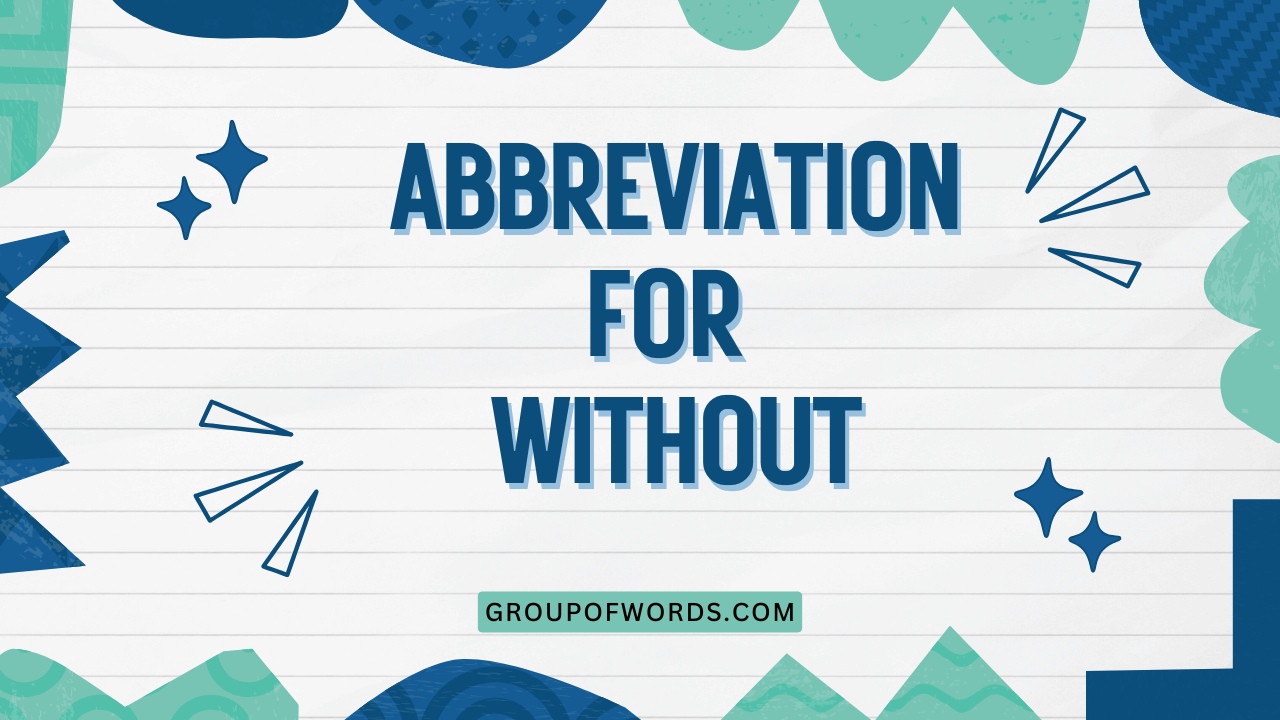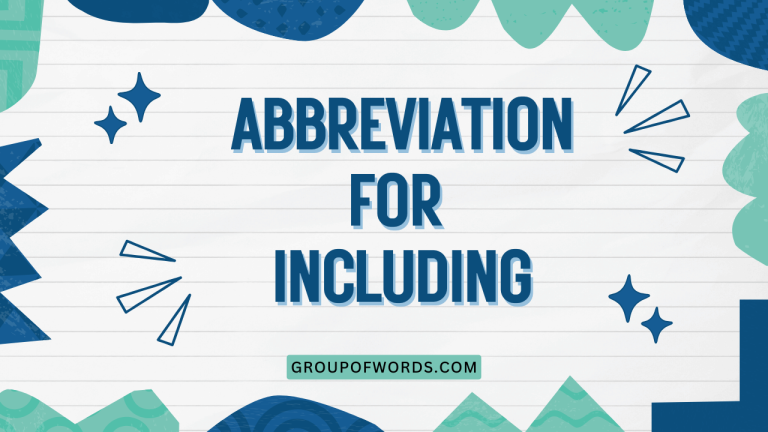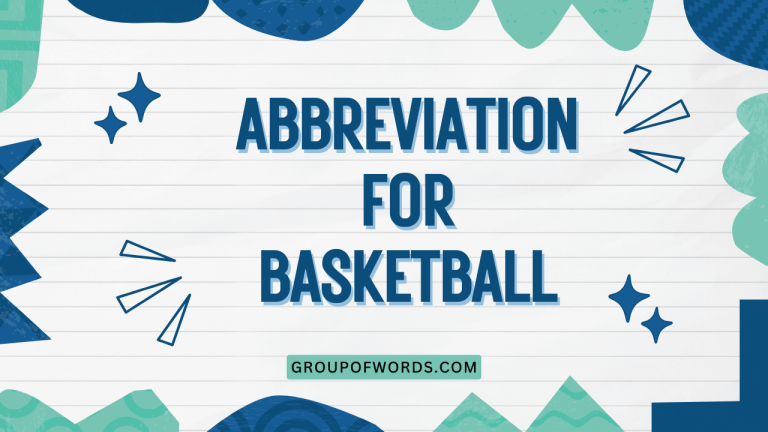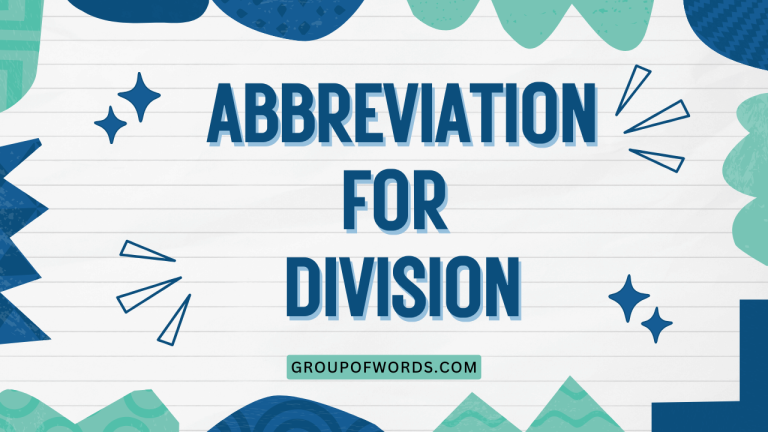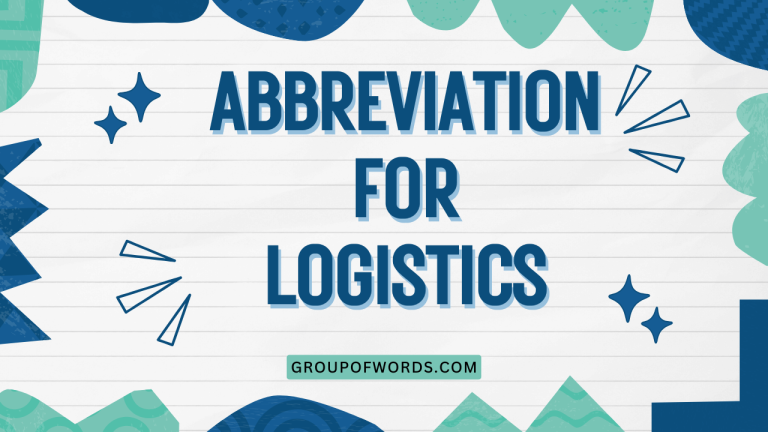“W/O”: Mastering the Abbreviation for “Without”
Understanding abbreviations is crucial for effective communication, especially in writing where conciseness is valued. The abbreviation “w/o,” standing for “without,” is a common shorthand used across various contexts.
This article delves into the intricacies of “w/o,” exploring its definition, usage, and nuances. Whether you are a student, a professional, or simply someone looking to enhance your English proficiency, this guide will equip you with the knowledge to confidently use and interpret “w/o” in your everyday communication.
This article will benefit students learning grammar, professionals writing reports, and anyone who wants to improve their understanding of English abbreviations. By understanding the proper use of “w/o,” you can write more efficiently and understand written communication more easily.
Table of Contents
- Introduction
- Definition of “W/O”
- Structural Breakdown
- Contextual Usage
- Examples of “W/O”
- Usage Rules
- Common Mistakes
- Practice Exercises
- Advanced Topics
- FAQ
- Conclusion
Definition of “W/O”
“W/O” is a widely recognized abbreviation for the word “without.” It signifies the absence or lack of something. Functionally, it serves as a preposition, indicating a condition where something is not present or included.
The abbreviation is derived from the first letter of “with” and “out,” creating a concise representation of the longer word.
The abbreviation “w/o” is usually used in informal writing and technical contexts, where brevity is valued. It’s less common in formal writing, where spelling out “without” is generally preferred.
Understanding the context in which “w/o” appears is key to interpreting its meaning correctly.
Structural Breakdown
The structure of “w/o” is straightforward: it combines the initial letter of “with” (w) with the preposition “out.” The slash (/) acts as a separator and a connector, visually linking the two components. There are no variations in the structure of this abbreviation.
It consistently appears as “w/o.”
This abbreviation, while simple, benefits from clear understanding of its components. It is not an acronym where the letters stand for something different, but rather a shortened version of the word itself.
The slash is crucial as it serves as a visual indicator that the word has been abbreviated and is not misspelled.
Contextual Usage
The use of “w/o” varies depending on the context. While it is perfectly acceptable in certain settings, it is less appropriate in others.
Understanding these nuances is essential for using the abbreviation correctly.
Formal Contexts
In formal writing, such as academic papers, legal documents, and official reports, it is generally best to avoid using “w/o.” The full word “without” is preferred to maintain a professional and polished tone. The use of abbreviations in these contexts can be seen as unprofessional or overly casual.
For example, instead of writing “The experiment was conducted w/o any errors,” it is more appropriate to write “The experiment was conducted without any errors.” This ensures clarity and adheres to the conventions of formal writing.
Informal Contexts
In informal settings, such as personal emails, text messages, and social media posts, “w/o” is commonly used and widely accepted. It contributes to a more relaxed and conversational tone.
In these contexts, brevity and efficiency are often prioritized over strict adherence to formal grammar rules.
For instance, you might write “See you later w/o fail!” in a text message to a friend. This is perfectly acceptable in an informal setting and conveys the message effectively.
However, the same sentence would be inappropriate in a formal business email.
Technical Contexts
In technical writing, particularly in fields such as computer programming, engineering, and mathematics, “w/o” is frequently used to save space and reduce redundancy. In these contexts, clarity and precision are paramount, and abbreviations are often employed to streamline communication.
For example, in a programming manual, you might see “Run the program w/o debugging flags.” This is a concise and efficient way to convey the information to a technical audience. The use of “w/o” is generally accepted and understood in these settings.
Examples of “W/O”
To further illustrate the usage of “w/o,” here are several examples categorized by context, providing a clear understanding of how to use this abbreviation effectively.
General Examples
Here are a variety of general examples that show how “w/o” can be used in everyday sentences. These examples cover a range of topics and situations.
The following table provides examples of “w/o” used in general sentences, showcasing its versatility and common usage. Each example is presented to illustrate how the abbreviation fits into different contexts.
| Sentence with “W/O” | Expanded Sentence (Without) |
|---|---|
| I can’t function w/o coffee in the morning. | I can’t function without coffee in the morning. |
| She left the house w/o saying goodbye. | She left the house without saying goodbye. |
| He completed the project w/o any help. | He completed the project without any help. |
| The cake is delicious w/o frosting. | The cake is delicious without frosting. |
| We went to the beach w/o sunscreen. | We went to the beach without sunscreen. |
| The meeting started w/o him. | The meeting started without him. |
| They traveled w/o a map. | They traveled without a map. |
| The concert was amazing w/o special effects. | The concert was amazing without special effects. |
| I can’t imagine life w/o music. | I can’t imagine life without music. |
| She finished the book w/o taking a break. | She finished the book without taking a break. |
| He made a decision w/o thinking. | He made a decision without thinking. |
| The team won the game w/o their star player. | The team won the game without their star player. |
| I baked cookies w/o chocolate chips. | I baked cookies without chocolate chips. |
| He fixed the car w/o any tools. | He fixed the car without any tools. |
| She danced w/o shoes. | She danced without shoes. |
| They hiked the mountain w/o water. | They hiked the mountain without water. |
| He passed the test w/o studying. | He passed the test without studying. |
| She wrote the letter w/o a pen. | She wrote the letter without a pen. |
| They cooked the dinner w/o a recipe. | They cooked the dinner without a recipe. |
| He built the house w/o a plan. | He built the house without a plan. |
| She sang the song w/o music. | She sang the song without music. |
| They ran the race w/o training. | They ran the race without training. |
| He climbed the tree w/o rope. | He climbed the tree without rope. |
| She painted the picture w/o brushes. | She painted the picture without brushes. |
| They sailed the ocean w/o a compass. | They sailed the ocean without a compass. |
Business Examples
In the business world, “w/o” can be useful in memos, reports, and emails, provided the context is not overly formal. Here are some examples of how “w/o” can be used in a business setting.
The following table illustrates the use of “w/o” in business-related contexts. These examples emphasize efficiency and clarity in business communications.
| Sentence with “W/O” | Expanded Sentence (Without) |
|---|---|
| The project can be completed w/o additional funding. | The project can be completed without additional funding. |
| We can proceed w/o their approval. | We can proceed without their approval. |
| The report was submitted w/o errors. | The report was submitted without errors. |
| The meeting will start w/o any further delays. | The meeting will start without any further delays. |
| The contract is valid w/o a signature. | The contract is valid without a signature. |
| The deal went through w/o any complications. | The deal went through without any complications. |
| We can launch the product w/o marketing. | We can launch the product without marketing. |
| The company can survive w/o new investments. | The company can survive without new investments. |
| The task can be done w/o supervision. | The task can be done without supervision. |
| The budget can be balanced w/o cutting jobs. | The budget can be balanced without cutting jobs. |
| The company can grow w/o taking loans. | The company can grow without taking loans. |
| The product can be sold w/o advertising. | The product can be sold without advertising. |
| The profits can increase w/o raising prices. | The profits can increase without raising prices. |
| The process can be automated w/o hiring more staff. | The process can be automated without hiring more staff. |
| The project can be successful w/o extra effort. | The project can be successful without extra effort. |
| The company can innovate w/o new technology. | The company can innovate without new technology. |
| The sales can improve w/o promotions. | The sales can improve without promotions. |
| The business can thrive w/o expansion. | The business can thrive without expansion. |
| The team can collaborate w/o meetings. | The team can collaborate without meetings. |
| The management can lead w/o micromanaging. | The management can lead without micromanaging. |
Technical Examples
Technical writing often uses “w/o” due to its need for brevity. Here are some examples of how “w/o” is used in technical documentation and specifications.
This table showcases the use of “w/o” in technical contexts, where precision and conciseness are highly valued. It provides examples from various technical domains.
| Sentence with “W/O” | Expanded Sentence (Without) |
|---|---|
| The program can run w/o administrator privileges. | The program can run without administrator privileges. |
| The system can operate w/o external power. | The system can operate without external power. |
| The device can function w/o internet access. | The device can function without internet access. |
| The algorithm can execute w/o errors. | The algorithm can execute without errors. |
| The code can compile w/o warnings. | The code can compile without warnings. |
| The server can handle requests w/o downtime. | The server can handle requests without downtime. |
| The database can be accessed w/o authentication. | The database can be accessed without authentication. |
| The software can be installed w/o compatibility issues. | The software can be installed without compatibility issues. |
| The network can operate w/o interference. | The network can operate without interference. |
| The circuit can function w/o overheating. | The circuit can function without overheating. |
| The processor can compute w/o lagging. | The processor can compute without lagging. |
| The API can be called w/o authorization. | The API can be called without authorization. |
| The module can be loaded w/o dependencies. | The module can be loaded without dependencies. |
| The application can be deployed w/o configuration. | The application can be deployed without configuration. |
| The data can be processed w/o validation. | The data can be processed without validation. |
| The system can be updated w/o rebooting. | The system can be updated without rebooting. |
| The function can return w/o exceptions. | The function can return without exceptions. |
| The component can be integrated w/o conflicts. | The component can be integrated without conflicts. |
| The script can be executed w/o parameters. | The script can be executed without parameters. |
| The test can pass w/o assertions. | The test can pass without assertions. |
Academic Examples
While less common in formal academic writing, “w/o” may appear in notes, drafts, or less formal academic contexts. Here are some appropriate uses.
The following table provides examples of “w/o” used in academic contexts, typically in notes or less formal writing. These examples show how the abbreviation can be used in educational settings.
| Sentence with “W/O” | Expanded Sentence (Without) |
|---|---|
| The hypothesis was tested w/o significant results. | The hypothesis was tested without significant results. |
| The research was conducted w/o funding. | The research was conducted without funding. |
| The paper was written w/o proper citations. | The paper was written without proper citations. |
| The experiment was completed w/o supervision. | The experiment was completed without supervision. |
| The study was done w/o a control group. | The study was done without a control group. |
| The theory was presented w/o evidence. | The theory was presented without evidence. |
| The argument was made w/o strong support. | The argument was made without strong support. |
| The analysis was performed w/o statistical tools. | The analysis was performed without statistical tools. |
| The conclusion was reached w/o sufficient data. | The conclusion was reached without sufficient data. |
| The presentation was given w/o visual aids. | The presentation was given without visual aids. |
| The lecture was delivered w/o enthusiasm. | The lecture was delivered without enthusiasm. |
| The course was completed w/o failing grades. | The course was completed without failing grades. |
| The project was finished w/o extensions. | The project was finished without extensions. |
| The assignment was submitted w/o revisions. | The assignment was submitted without revisions. |
| The exam was passed w/o cheating. | The exam was passed without cheating. |
| The seminar was attended w/o participation. | The seminar was attended without participation. |
| The conference was held w/o controversy. | The conference was held without controversy. |
| The dissertation was defended w/o difficulty. | The dissertation was defended without difficulty. |
| The thesis was accepted w/o changes. | The thesis was accepted without changes. |
| The research was published w/o edits. | The research was published without edits. |
Usage Rules
While “w/o” is a simple abbreviation, there are a few guidelines to follow to ensure correct usage. These rules cover punctuation, capitalization, and alternative phrasing.
Punctuation
The abbreviation “w/o” includes a forward slash (/). It is important to ensure the slash is correctly placed between the “w” and the “o.” There is no need for additional punctuation such as periods before or after the abbreviation.
Incorrect: w.o, w/o., w/ .o
Correct: w/o
Capitalization
The capitalization of “w/o” depends on its position in the sentence and the surrounding text. If it starts a sentence or is part of a title, capitalize the “W.” Otherwise, it is typically written in lowercase.
Example:
“W/O proper planning, the project will fail.” (Beginning of sentence)
“The document was submitted w/o errors.” (Mid-sentence)
Alternatives to “W/O”
While “w/o” is a convenient abbreviation, there are several alternatives you can use depending on the context. These alternatives can provide more clarity or formality.
Some common alternatives include:
* Without (formal and general use)
* Minus (mathematical or technical contexts)
* Excluding (when specifying exclusions)
* Lacking (when emphasizing a deficiency)
Common Mistakes
Even with a simple abbreviation like “w/o,” mistakes can occur. Here are some common errors and how to avoid them.
The following table highlights common mistakes when using “w/o” and provides the correct usage for comparison. Understanding these errors can help prevent them in your own writing.
| Incorrect | Correct | Explanation |
|---|---|---|
| The report was submitted w.o. errors. | The report was submitted w/o errors. | Incorrect punctuation with unnecessary periods. |
| The project was completed W/O funding. | The project was completed w/o funding. | Unnecessary capitalization in the middle of a sentence. |
| I can’t imagine life without music, w/o it would be so boring. | I can’t imagine life without music; it would be so boring. | Overuse of “w/o” in close proximity; use “without” or rephrase. |
| He left w/o’ saying goodbye. | He left w/o saying goodbye. | Incorrect punctuation; no apostrophe needed. |
| The program runs w/o any problems, which is good. | The program runs w/o problems, which is good. | “Any” is often redundant; using “w/o problems” is more concise. |
| W/O, the project cannot succeed. | Without proper planning, the project cannot succeed. | Avoid starting formal sentences with “w/o”; use “without” instead. |
| The test was passed w/o no errors. | The test was passed w/o errors. | Double negative; “w/o no” is redundant. |
| She went to the store w/o. her purse. | She went to the store w/o her purse. | Extra period is unnecessary and incorrect. |
Practice Exercises
To reinforce your understanding of “w/o,” here are several practice exercises with varying levels of difficulty. These exercises will help you apply what you have learned.
Exercise 1: Fill in the Blanks
Fill in the blanks with the correct abbreviation “w/o” or the full word “without,” depending on the context.
Complete the following sentences using either “w/o” or “without,” choosing the most appropriate option based on the context. This exercise helps reinforce your understanding of when to use the abbreviation versus the full word.
| Question | Answer |
|---|---|
| 1. I can’t function ______ my morning coffee. | without |
| 2. She left the party ______ saying goodbye. | w/o |
| 3. The project was completed ______ any additional costs. | without |
| 4. He managed to fix the car ______ any help from a mechanic. | w/o |
| 5. The cake is delicious ______ the frosting. | w/o |
| 6. ______ proper planning, the event will fail. | Without |
| 7. The system can operate ______ external power. | w/o |
| 8. The research was conducted ______ funding. | without |
| 9. I went to the store ______ my wallet. | w/o |
| 10. The presentation was given ______ visual aids. | without |
Exercise 2: Rewrite Sentences
Rewrite the following sentences using “w/o” where appropriate, aiming for conciseness and informality.
Rewrite the following sentences, replacing “without” with “w/o” where it is appropriate to do so. This exercise focuses on using the abbreviation in suitable contexts while maintaining clarity.
| Original Sentence | Rewritten Sentence |
|---|---|
| 1. The code compiled without any errors. | The code compiled w/o errors. |
| 2. I cannot imagine my life without the internet. | I can’t imagine my life w/o the internet. |
| 3. She completed the marathon without stopping once. | She completed the marathon w/o stopping. |
| 4. The meeting started without him being present. | The meeting started w/o him. |
| 5. The device functions properly without any additional drivers. | The device functions properly w/o additional drivers. |
| 6. They traveled to Europe without a detailed itinerary. | They traveled to Europe w/o a detailed itinerary. |
| 7. He successfully defended his thesis without any major issues. | He successfully defended his thesis w/o major issues. |
| 8. The project was launched without external funding. | The project was launched w/o external funding. |
| 9. She prepared a delicious meal without using any dairy products. | She prepared a delicious meal w/o dairy products. |
| 10. The company managed to increase profits without raising prices. | The company increased profits w/o raising prices. |
Exercise 3: Error Correction
Identify and correct the errors in the following sentences related to the usage of “w/o.”
Correct the errors related to the usage of “w/o” in the following sentences. This exercise tests your ability to identify and fix common mistakes associated with the abbreviation.
| Incorrect Sentence | Corrected Sentence |
|---|---|
| 1. The report was submitted w.o errors. | The report was submitted w/o errors. |
| 2. W/O proper planning the project will fail. | Without proper planning, the project will fail. |
| 3. He left the house w/o’ saying goodbye. | He left the house w/o saying goodbye. |
| 4. She completed the task w/o any problems, which is great. | She completed the task w/o problems, which is great. |
| 5. The test was passed w/o no errors. | The test was passed w/o errors. |
| 6. I can’t imagine life without music, w/o it would be so boring. | I can’t imagine life without music; it would be so boring. |
| 7. The meeting went well w/o him being there. | The meeting went well w/o him. |
| 8. The code runs w/o no warnings. | The code runs w/o warnings. |
| 9. She went to the party w/o. a date. | She went to the party w/o a date. |
| 10. He finished the race w/o any help from the trainers. | He finished the race w/o help from the trainers. |
Advanced Topics
For advanced learners, understanding the etymology and cross-cultural usage of abbreviations can provide a deeper appreciation for language evolution and context.
Etymology
The abbreviation “w/o” emerged as a shorthand in informal and technical writing to save space and time. Its roots can be traced to the increasing prevalence of abbreviations in the English language, particularly during the rise of digital communication.
The need for concise expressions in emails, memos, and technical documentation facilitated the adoption of “w/o” as a standard abbreviation for “without.”
Understanding the etymology of “w/o” provides insight into the broader trend of linguistic abbreviation driven by efficiency and technological advancements. This abbreviation, like many others, reflects the dynamic nature of language and its adaptation to changing communication needs.
Cross-Cultural Usage
The understanding and acceptance of “w/o” can vary across cultures and languages. While “w/o” is commonly used in English-speaking countries, its usage might be less prevalent or understood in non-English speaking regions.
In international communications, especially in formal settings, it is advisable to use the full word “without” to ensure clarity and avoid potential misunderstandings.
Furthermore, the use of abbreviations, in general, may differ significantly across cultures. Some languages may have their own set of abbreviations for common words and phrases, while others may prefer to avoid abbreviations altogether in formal writing.
Being mindful of these cultural differences is crucial for effective cross-cultural communication.
FAQ
Here are some frequently asked questions about the abbreviation “w/o” to clarify any remaining doubts.
- Is “w/o” considered proper English?
“W/o” is generally considered acceptable in informal contexts such as personal emails, text messages, and notes. However, it is not appropriate for formal writing, where “without” is the preferred term.
- Can I use “w/o” in academic papers?
It is generally not recommended to use “w/o” in formal academic papers. Academic writing requires a professional and polished tone, which is better achieved by using the full word “without.”
- Is there a difference between “w/o” and “without”?
The primary difference is the level of formality. “W/o” is an abbreviation used in informal settings, while “without” is the full word suitable for both formal and informal contexts.
- How do I punctuate sentences containing “w/o”?
The abbreviation “w/o” does not require any additional punctuation. Simply use it in place of “without” as appropriate. For example, “I went to the store w/o my wallet.”
- What are some alternatives to using “w/o”?
Alternatives to “w/o” include “without,” “minus,” “excluding,” and “lacking,” depending on the specific context and desired level of formality.
- Is it okay to start a sentence with “w/o”?
While grammatically permissible, starting a sentence with “w/o” is generally discouraged in formal writing. It is better to use “Without” to maintain a professional tone.
- Can “w/o” be used in business emails?
The appropriateness of using “w/o” in business emails depends on the context and the relationship with the recipient. In formal business communications, it is best to use “without.” However, in informal internal communications, “w/o” may be acceptable.
- Is “w/o” universally understood in all English-speaking countries?
Yes, “w/o” is generally understood in all English-speaking countries, although its frequency of use may vary. It is a widely recognized abbreviation for “without.”
Conclusion
Mastering the abbreviation “w/o” involves understanding its definition, appropriate usage, and contextual nuances. While it is a convenient shorthand for “without,” it is essential to use it judiciously, considering the level of formality required in different writing situations.
By following the guidelines and examples provided in this article, you can confidently use “w/o” in appropriate settings and avoid common mistakes.
Remember to reserve “w/o” for informal communications and technical contexts where brevity is valued. In formal writing, always opt for the full word “without” to maintain a professional and polished tone.
Practice using “w/o” in various sentences and contexts to solidify your understanding and improve your overall English proficiency. With careful attention to context and usage, you can effectively incorporate “w/o” into your writing and communications.
